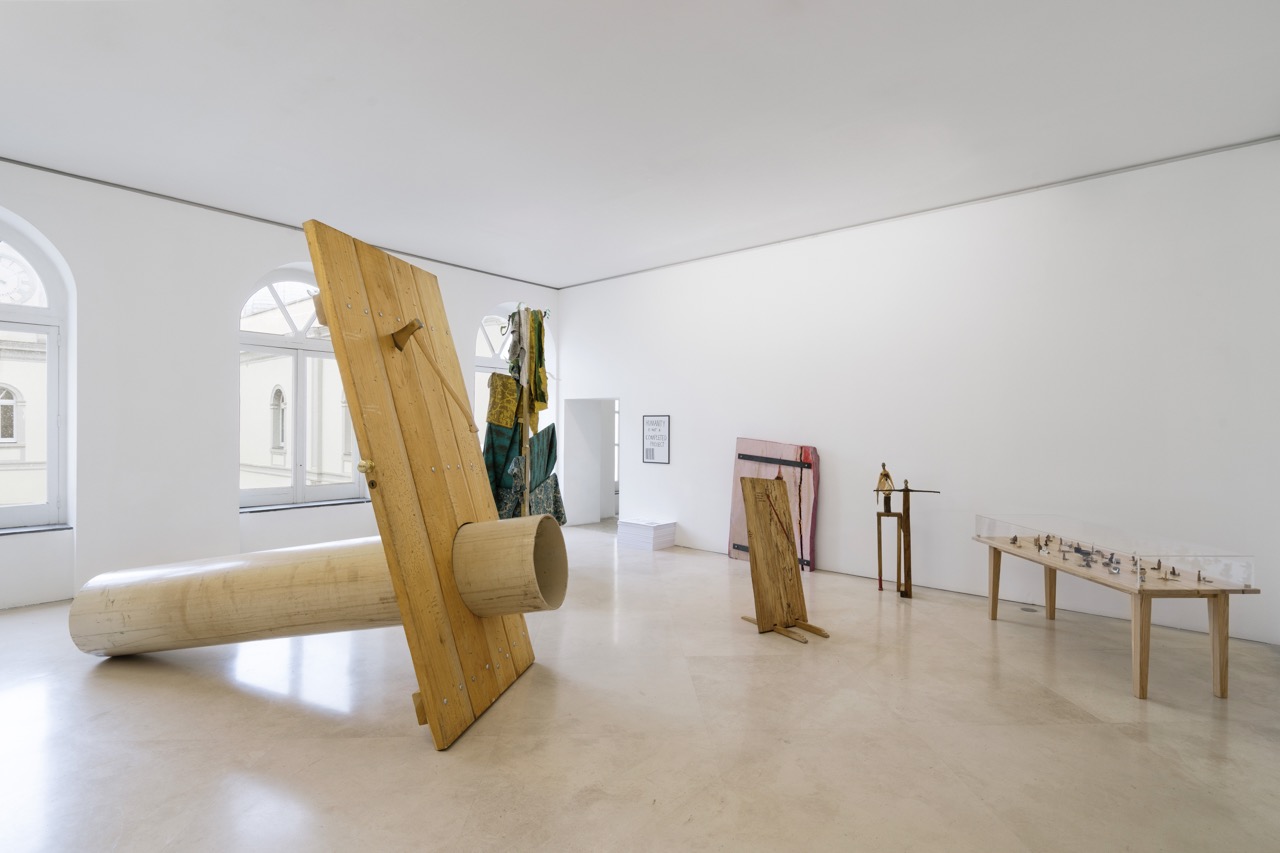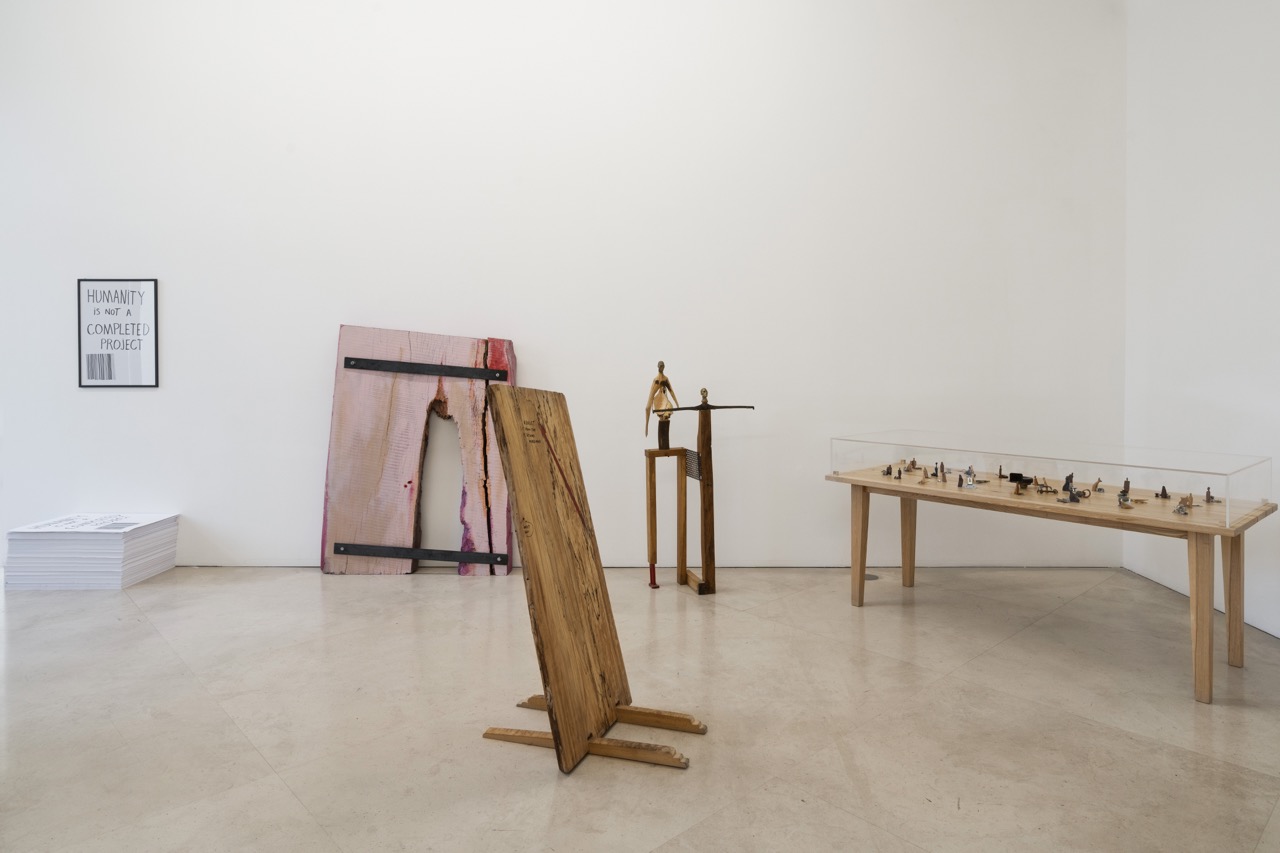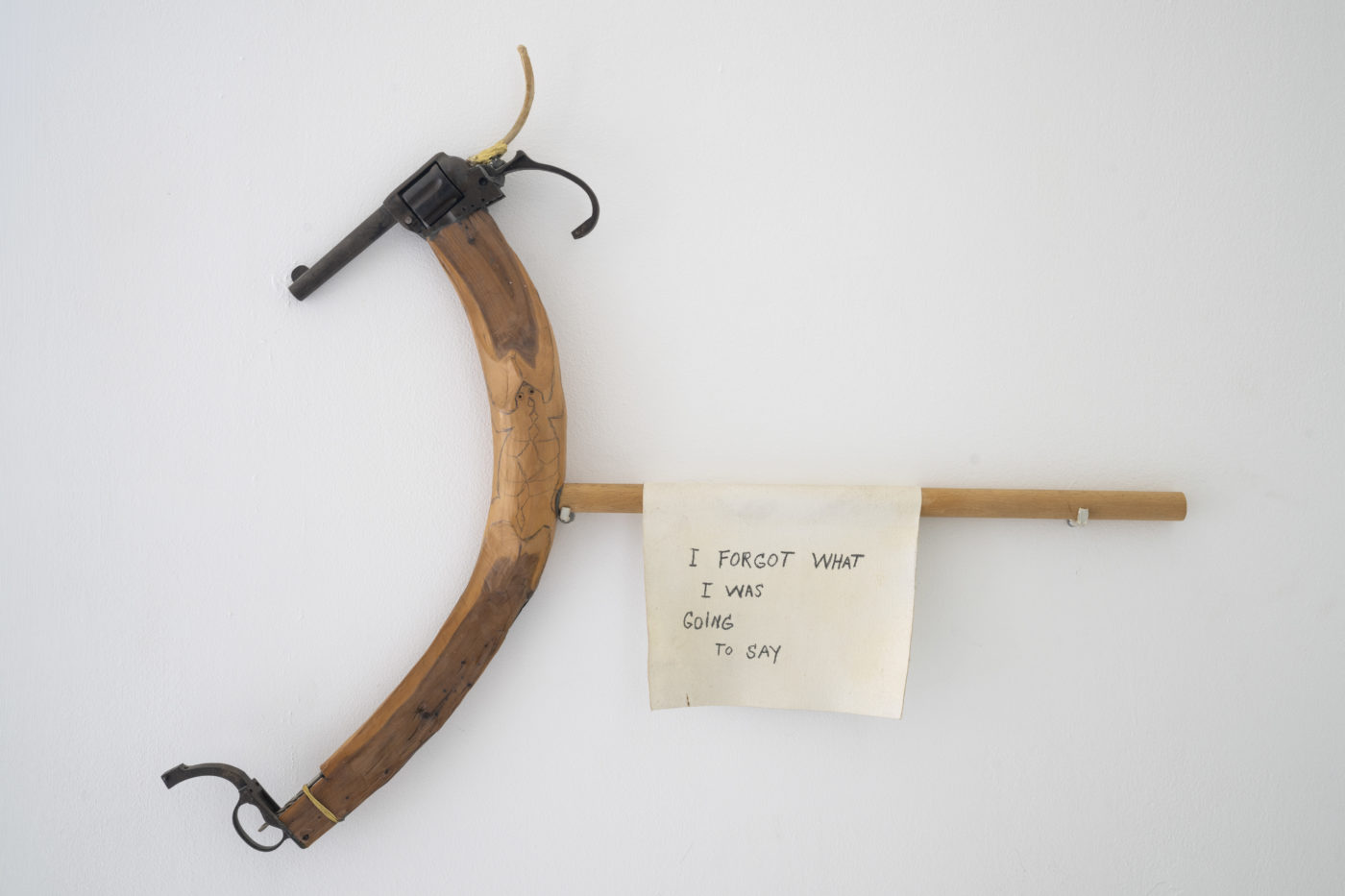A prologue to the exhibition gravitates around Durham’s large sculptural work Gilgamesh (1993) and one of his last works Tree (2021). The Epic of Gilgamesh occupies an important place in the artist’s inquiry into notions of an originary separation between culture and nature: ‘It’s the story of the first city, Uruk, and the first writing. Gilgamesh the prince cut down the forest, built a wall, and what was inside was the city. And then he started telling this story in writing and that’s how he proved it was a city. He made a truth: he invented a city and a truth at the same time.’ The ancient story of the birth of the city, with its attendant destruction of the forest, becomes a parable of the origins of civilization. The narrative was decoded from inscriptions on a clay tablet. In Durham’s Gilgamesh, the establishment of Uruk and the creation of a wall separating humanity from the rest of nature is expressed through the violent act of thrusting a metal axe into a giant wooden door. Tools and technologies that have been linked to the idea of an arrow of human civilizational progress have also been turned to massive violence in war, genocide and ecocide; Durham underlines this undecidability in what might rather be seen as the loops and spirals of human history in the body of work Labyrinth (2007), undertaken during a residency at the Atelier Calder. Une blessure par balle (2007) from this corpus maps the penetration of bullets from the Second World War into the inner bark of a fallen beech tree found at the border between France and Germany. The metal was absorbed by the tree into the patterns of its growth rings, and holes left by the passage of projectiles became a refuge for insects and fungi. The creatures that compose Labyrinth elements (2007) bring together found metal elements and carved wood from the dead tree, forming a community of hybrid beings.
Jimmie Durham: humanity is not a completed project, installation view of the exhibition at the Madre museum, 2023. Photo by Amedeo Benestante











